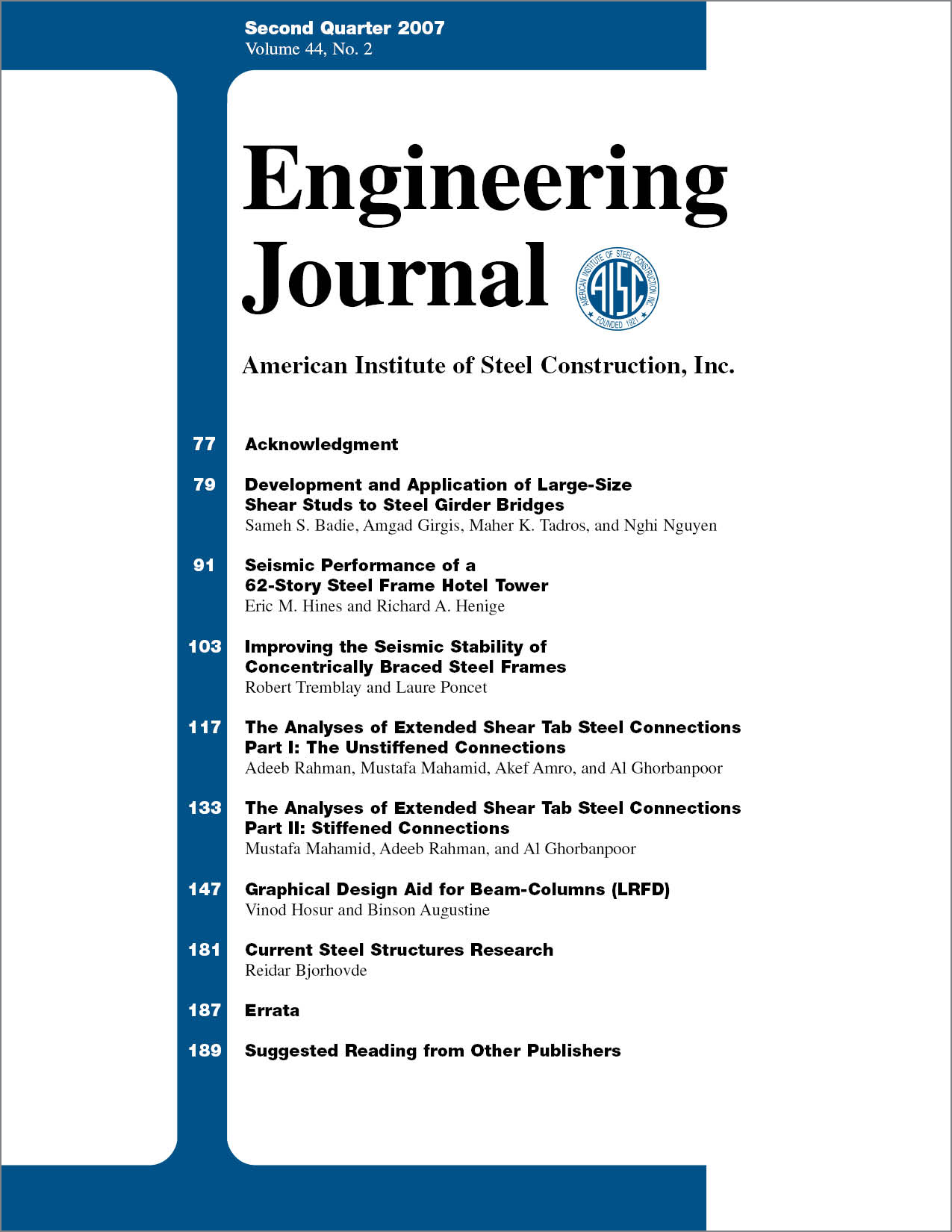The Analyses of Extended Shear Tab Steel Connections Part I: The Unstiffened Connections
DOI:
https://doi.org/10.62913/engj.v44i2.905Keywords:
Connections-Simple Shear, Research, AnalysisAbstract
The objective of this paper is to develop a viable, comprehensive 3-D finite element model capable of predicting the nonlinear behavior of unstiffened extended shear tab connections building on the experimental investigations of Sherman and Ghorbanpoor. In order to overcome the limitations and the extensive and expensive demands required by the experimental investigation, the development of a computational model to validate and expand on the experimental results is merited and presents a powerful tool in examining the actual structural behavior. It presents the opportunity for the analyst and the designer to investigate full field results output for all the structural members. The model allows the examination of a wide range of connection types, configurations, materials, and loadings. The paper also identifies and presents important relevant parameters that are crucial in making the finite element (FE) analysis possible. The FE model is intended to validate the existing experimental results and to predict the behavior of deeper connections without the need for further expensive experiments. This model presents a viable modeling procedure to effectively account for contact behavior, bolt tensioning and nonlinearity. Analysis of surfaces in contact requires special numerical techniques due to the inherent nonlinearity. Parameters such as coefficient of friction, bolt pre-tensioning, and surface stiffness must be considered to achieve proper contact between the surfaces. In this paper two 3-D FE models, having 3-bolt and 5-bolt unstiffened extended shear tab connections are constructed. The 3-bolt connection failed primarily in column web mechanism failure mode with bolt shear and twist of the shear tab as secondary failure modes. However, the 5-bolt connection failed primarily in twisting of the shear tab, while column web mechanism and bolt shear were the secondary failure modes. The web mechanism failure mode is due to the punching of the shear tab into the web of the column, resulting in high plastic strains and permanent deformation in the web.

